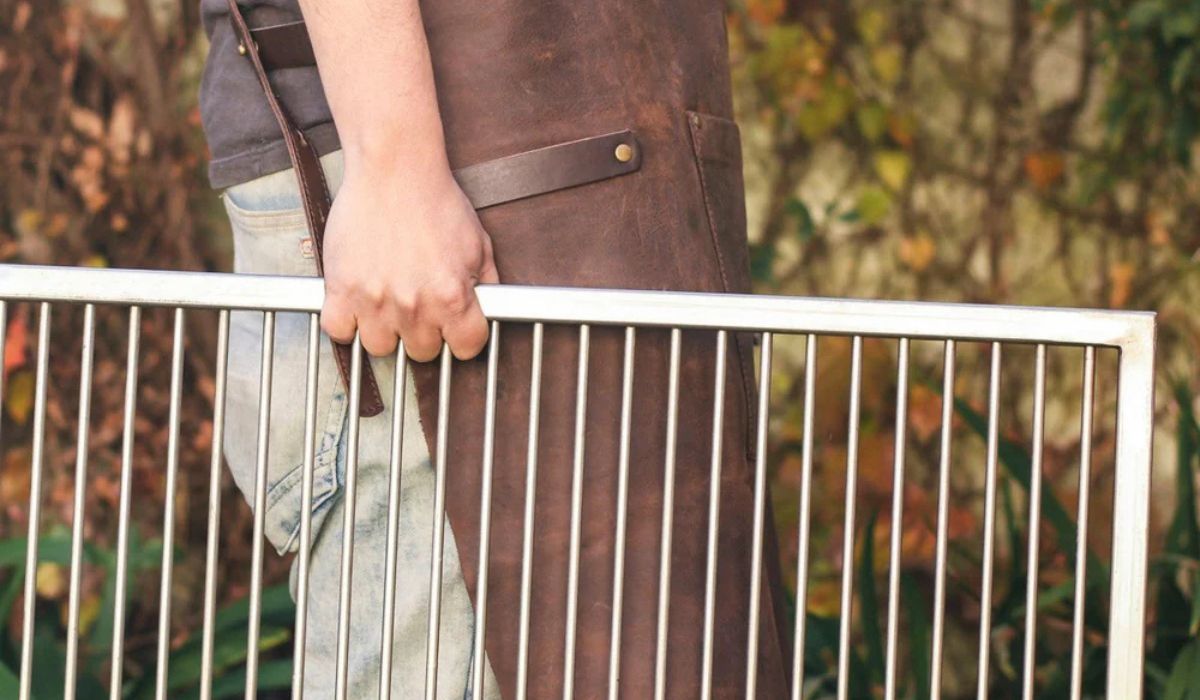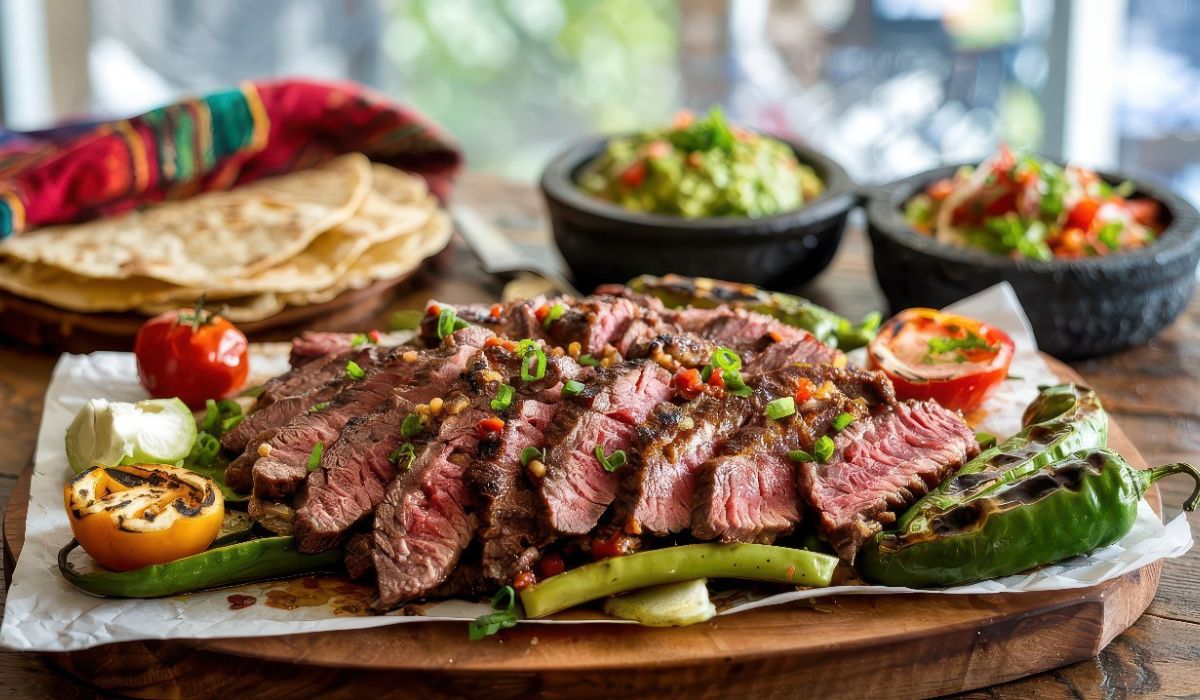
How to Keep Grill Grates from Rusting
One morning, you step outside, coffee in hand, and there it is: your beautiful, beloved grill… rusted. It didn’t happen overnight, of course, but it feels like it did. And just like that, you’re looking at a replacement for your Argentinian grill, a serious investment, even on sale.
As they say, once bitten, twice shy. That’s why we’re here: to help you keep your new grill grates from rusting. In this article, we’ll cover best practices, bust a few myths, and share tips to help you choose the right grill for you and take care of it properly.
Why Rust Is the Enemy of a Great Grill
Every great story needs a villain, and in the world of grilling, rust plays the part perfectly. Why? Because it creeps in silently, dulling flavors, creating uneven hot spots, and even posing health risks. Left unchecked, it weakens your grates and cuts short the life of your grill.
Even here at Gaucho Life, where every grill is built with craftsmanship and care, rust can strike if proper maintenance is neglected. And a rusted grill won’t deliver a great asado, no matter how skilled the asador.
That’s why keeping your grates clean, dry, and seasoned is absolutely essential. The good news? A little know-how and regular upkeep go a long way. The better news? You are in the right place to start.

Understanding Why Grill Grates Rust
To keep your parrilla or Santa Maria grill from rusting, it helps to understand how rust forms. In other words, its villain origin story.
Rust develops when a metal surface, often stained with acidic residues, interacts with moisture and oxygen. Corrosive ingredients like vinegar, citrus-based marinades, or wine can accelerate the process.
Most rust issues come down to poor maintenance. Common causes include:
-
Food residues. Acid from sauces and meat juices can etch into the metal, allowing rust to take hold. Grease buildup traps moisture and acids against the surface, speeding up corrosion.
-
Improper cleaning. Using abrasive chemicals or scrubbing too hard can damage protective coatings or seasoning layers, exposing bare metal and leaving the grates vulnerable to rust.
-
Weather exposure. Moisture, rain, salty air, and wind can wear down even high-end, rust-resistant grates. If you can’t store your grill indoors, a breathable, water-resistant cover does the trick.
-
Leaving your grill wet after cleaning. After washing, always dry your grates thoroughly, either with a towel or by heating the grill briefly to evaporate moisture. Even a few stray droplets can invite rust.
In brief, rust prevention starts with proper maintenance. And, before you start thinking about it, the answer is no: there isn’t a thing like a “set-and-forget” grill.
Indeed, some models don’t require as much maintenance as others. Still, the lifespan of a neglected stainless steel grill will be shorter than a basic steel’s, if the latter is cleaned and oiled regularly.
| Feature | Stainless Steel Grills | Iron Grills |
|---|---|---|
| Corrosion Resistance | Very high. Resists rust, especially 304 grade stainless. | Moderate. Can rust if not thoroughly cleaned and dried. |
| Maintenance | Low to medium. Just regular cleaning and a light oiling. | High. Needs frequent cleaning, drying, and oiling. |
| Durability | Very durable if maintained. Keeps its appearance for years. | Can last decades, but sensitive to moisture and impacts. |
| Heat Retention | Good, but less than iron. Heats and cools quickly. | Excellent. Retains heat and cooks more evenly. |
| Flavor & Searing | Provides good sear, but less “traditional flavor” than iron. | Delivers classic grill flavor, with iconic sear marks. |
| Best For | Anyone seeking convenience, easy upkeep, and weather resistance. | Traditional BBQ lovers who want maximum heat retention and classic flavor. |
Essential Steps to Prevent Grill Grate Rust
At Gaucho Life, firing up quality grills is more than a habit: it’s a lifestyle. That’s why developing a step-by-step system to keep our grates rust-free is non-negotiable. Here’s how we do it:
-
We clean the grill grates after every use, while still warm, to remove stuck-on debris. Stainless steel grates usually just need a firm sweep with a grill brush. For iron grates, you may need a stiff wire brush or steel wool.
-
After cleaning, we apply a layer of high-smoke-point oil. Iron grills need a generous coat, while stainless steel grates only require a light, even layer. Discover our Argentine Iron Grill Set for authentic asado experiences.
-
No matter the material, moisture is the enemy of grates. We never let water sit on the surface of the grill. After cleaning, we dry the grates thoroughly with a paper towel or run the grill on low heat to evaporate residual moisture.
-
We periodically check for chipped coatings, early rust spots, or corrosion, especially around corners and edges, and treat them immediately to save them from major damage later.
-
Storage is key to keeping grill grates from rusting. Portable or cart-mounted grills are always kept under shelter, even in dry climates. For built-in setups, we rely on weather-resistant grill covers.
-
We regularly conduct deep cleans. Once or twice a year, we remove the grates and give them a full reset: soaking them in vinegar if there´s rust, scrubbing, rinsing, drying, and seasoning them with oil.
-
To season iron grates, we apply oil generously and heat for 30–60 minutes to build up a protective layer. For stainless steel, we wipe with a thin coat of oil and heat for 10–15 minutes, enough to bond the oil and enhance shine.
A note on stainless steel grates: There’s no such thing as a rust-proof grill that is maintenance-free. Lower-grade stainless (like 201 or 430) can corrode when exposed to heat, salt, and moisture. Higher-end 304 stainless steel is more resistant to rust, but will oxidize over time if neglected. Regular seasoning and proper care make all the difference.
Why Stainless Steel Grates Are Worth the Investment
After everything we’ve said so far, you might be wondering: Are stainless steel grates really worth it? Spoiler alert, they are. Especially if you live in a place with unpredictable weather, don’t have a grill area under a gazebo, or time for constant upkeep.
Stainless steel grates offer a polished look that’s surprisingly easy to maintain. Thanks to the chromium in their alloy, they develop a protective oxide layer that helps guard against rust.
Even if neglected, it takes a long time for this chromium layer to break down, leaving the grates vulnerable to moisture and acid. And with high-grade options like 304 stainless, all it takes is regular cleaning and a light coat of oil to keep them in shape.
On the other hand, iron grates are prone to rust and require more maintenance. They can last a lifetime. But if not cleaned, dried, and seasoned regularly, rust will find its way in.
They’re also more vulnerable to damage from temperature shifts and may chirp or crack if not properly tempered. Stainless steel grills don’t have this issue, as they heat quickly and cool down faster.
In short, while cast iron grates may offer better heat retention and vintage charm, stainless steel outperforms when it comes to durability, convenience, and year-round resistance to the elements, from New England winters to Texas summers. If these are features you value, the investment is worth it.
At Gaucho Life, our stainless steel parrillas are built to combine the best of both worlds: classic appeal, low maintenance, and minimal rust risk, perfect for permanent setups, firepits, or mobile grills. Don’t believe us? Take a look, and feel free to share your thoughts in the comments below. 👇

Pro Tips for Grill Grate Longevity
By now, we’ve covered the essentials of grill grate maintenance. Let’s take it a step further with advanced techniques to help your grill perform like new, season after season, keeping your cookouts clean, flavorful, and rust-free.
-
Stick to natural degreasers. Never use harsh chemicals, as they can damage seasoning layers and leave behind residues that affect flavor. Diluted vinegar, citrus-based degreasers, or baking soda pastes are gentle on the metal and harsh on the grease.
-
Preheat before burning. Fire up your grill for 10–15 minutes. This will burn off residue that may have collected since your last session. Brush the grates lightly with a steel grill brush to remove the remains.
-
Use grill mats, baskets, or griddles. Grill delicate items within special containers to prevent sticking and reduce grate wear. This will also protect the grates from acidic or sugary marinades that can corrode over time.
-
Breathable covers. Protect your grill from rain, UV rays, and debris with a well-fitted cover that is breathable enough to prevent condensation during cool mornings or humid nights.
-
Do seasonal resets. Deep clean and season stainless steel grates 1–2 times a year. For iron grates, season monthly. Always inspect for rust, warping, or loose hardware before firing it up.
FAQs
Still curious about grill grate maintenance? Here are answers to some of the most common questions we hear. If yours isn’t listed, feel free to reach out. We’re always happy to help!
Can I use soap and water on grill grates?
Yes, you can soak the grates in dish soap and warm water, as long as you avoid harsh chemicals. Make sure to rinse and dry completely to keep grill grates from rusting. After washing, heat the grill for 10–15 minutes to evaporate any lingering moisture.
How do I remove existing rust?
To remove grease gobs or existing rust, follow these steps:
-
For an iron grate, use a wire brush or steel wool to remove flakes. For stainless steel grates, use a gentle cleaning brush to avoid scratching.
-
Remove the grates and soak them in white vinegar or apply a baking soda paste. This will loosen stubborn spots.
-
Rinse thoroughly, checking that no bristles are left behind.
-
Dry with paper towels, then heat the grill to evaporate any moisture.
-
Lightly coat the grates with high-smoke-point oil and heat again to reseason.
Inspect carefully. If the grates are warped, deeply pitted, or flaking heavily, it’s time to replace them.
Are stainless steel grates really rust-proof?
Stainless steel grates are rust-resistant, not rust-proof. Quality stainless steel (like 403) holds up well against corrosion, but it can still rust if exposed to constant moisture, salt, or acidic marinades without proper care.
Should I cover my grill year-round?
Absolutely. Exposure to the elements can damage grates beyond just moisture.
A well-fitted, breathable, and water-resistant cover protects against UV rays, condensation, and airborne debris, helping prevent rust and prolong your grill’s life year-round.
Rust Out, Grilling In
At the end of the day, rust-free grates aren’t just about easier maintenance or safer cooking: they’re part of a fire-fueled tradition. A well-cared-for grill is essential for delivering that legendary flavor at the heart of every Argentinian asado.
In other words, a little upkeep goes a long way. And when paired with the right materials, your grill becomes more than just a tool: it becomes a trusted partner. But like any good relationship, it helps to choose wisely from the start.
Maintenance-friendly, high-performance grills pave the way for years of unforgettable meals. Explore our collection of stainless steel Argentinian grills and find your next outdoor companion.
Because at Gaucho Life, we know it’s more than just about cooking. It’s about the lifestyle.





Dejar un comentario
Este sitio está protegido por hCaptcha y se aplican la Política de privacidad de hCaptcha y los Términos del servicio.